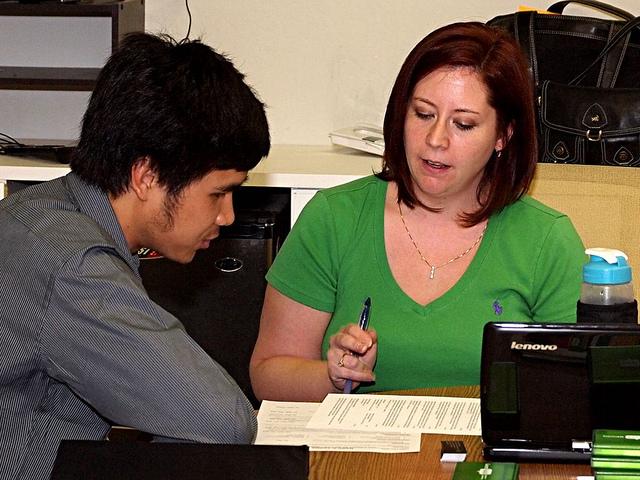The Job Seeker’s Guide, What You Need to Know to Succeed.
Starting a career can be an exciting yet challenging journey. Whether you’re fresh out of school or looking to switch fields, understanding how to secure that first job is crucial. From crafting the perfect resume to building a professional network, each step you take brings you closer to your goal.
Entry-Level Positions
Start by aiming for jobs labeled “entry-level.” These are the earliest positions in a career path, perfect for folks without much professional experience. Instead of diving straight into highly competitive senior roles, focus on these initial rungs of the job ladder.
Try these search methods:
- Use job platforms like LinkedIn and type in “entry-level [job name].” For instance, if you’re eyeing marketing, search for “entry-level marketing.”
- Find the title of an entry-level job in your interest area, like “junior marketer,” and search job sites like FlexJobs for those titles.
- Browse company websites that catch your eye. Check their job listings for any entry-level openings.
Creating and customizing your resume is vital. Here’s a step-by-step:
- Start with a “master” resume covering all your qualifications, experiences, and skills.
- Read through job descriptions and note the skills they emphasize.
- Adjust your “master” resume to highlight the skills and experiences that match each job’s needs. Reflect the language used where possible.
- Customize your cover letter too, echoing your resume’s strong points and aligning them with the job description.
- Hit the apply button and repeat this process for future applications.
Transferable skills are your secret weapon. These are skills you’ve honed elsewhere that are relevant to the job you want. These might be technical skills like coding or soft skills like communication and problem-solving.
Don’t just focus on work experience. Education and extracurricular activities can be just as valuable. Highlight relevant coursework, projects, or participation in organizations that developed your skills.
Need more experience? Intern, volunteer, or do it yourself:
- Internships and volunteer work can give you a taste of the industry and help build your resume. If you want to break into project management, volunteer at a charity organizing events.
- Build a personal project portfolio. For instance, if you want to be a graphic designer, create sample projects to showcase your work.
Networking can unlock hidden opportunities:
- Attend industry events and build connections.
- Join LinkedIn and other professional networks.
- Reach out to people in the industry directly.
Building in-demand skills through courses or certificates can make you more attractive to employers. Community colleges, universities, and online platforms like Coursera offer cost-effective ways to learn new skills.
Stay persistent. The average job search takes months, but adjusting your approach can help. Networking, seeking internships, and continuing your education can all improve your prospects.

Networking
Networking is a game-changer in the job search process. Having a strong network can open doors you didn’t even know existed, turning potential opportunities into real job offers. Personal connections often lead to job interviews, industry insights, and professional recommendations.
Attending networking events is a great starting point. These gatherings, whether industry-specific conferences, local meetups, or online webinars, are opportunities to meet like-minded individuals and industry veterans. Start by introducing yourself, sharing your career aspirations, and showing genuine interest in others’ journeys.
Reaching out to industry contacts can feel challenging, but it’s essential. Don’t hesitate to send a friendly yet professional message to someone whose career path you admire or whose company you’re interested in. LinkedIn is a powerful tool for this—craft a personalized message explaining why you’re reaching out and how your interests align with their work.
Informational interviews are another effective strategy. These aren’t job interviews, but rather informal conversations where you can learn more about a particular role, company, or industry. They provide valuable insights and can significantly broaden your understanding of your chosen field.
Here’s some practical advice for nurturing these professional relationships:
- Stay engaged: Keep in touch with your contacts. Send a thoughtful note every now and then—maybe an article they might find interesting or a congratulatory message on their achievements.
- Be genuine: Authenticity goes a long way. People can sense when you’re genuinely interested in them versus when you’re only looking to get something.
- Offer help: Networking is a two-way street. Be open to offering assistance or sharing valuable information with your contacts.
- Follow up: After meeting someone new, follow up with a thank-you note or an email summarizing your conversation and expressing your appreciation.
Remember, building a strong network takes time and effort. But the benefits—ranging from invaluable career advice to unexpected job leads—are well worth it. With a strong network behind you, you’ll be better equipped to find fulfilling opportunities.
Customizing Your Resume and Cover Letter
Adapting your resume and cover letter to align with specific job descriptions is an essential strategy for job seekers. It’s about making your application stand out by highlighting the right qualifications and using the appropriate keywords to ensure it passes through applicant tracking systems (ATS).
Start with a “master” resume. This document is a comprehensive list of your qualifications, experiences, and skills. It’s not something you use directly for job applications, but rather a resource from which you can pull relevant information when customizing your resume for specific positions.
Creating your “master” resume:
- Document Everything: Include all jobs, educational experiences, certifications, skills, and accomplishments. Think of this as your career inventory.
- Use Descriptive Language: Be detailed in your job descriptions and accomplishments. Quantify achievements where possible (e.g., “increased sales by 20%” or “managed a team of 10”).
- Highlight Skills: List all your skills, both hard (technical) and soft (interpersonal). This will make it easier to identify which ones are relevant to specific job descriptions.
Once you have your master resume, you can begin adapting it for individual applications. Here’s a step-by-step guide on how to do that:
- Analyze the Job Description: Carefully read the job description to understand what the employer is looking for. Highlight keywords and phrases that are repeatedly mentioned, such as required skills, qualifications, and experience.
- Identify Relevant Experiences: From your master resume, select experiences and skills that match what’s highlighted in the job description. Focus on the most relevant aspects to create a targeted resume.
- Mirror the Language: Use the same terminology and phrases as the job description. This not only helps with getting through the ATS but also resonates well with hiring managers who are looking for specific qualifications.
- Reorder for Impact: Make sure the most relevant information appears at the top of your resume. If a job description emphasizes a specific skill, lead with that in your skills section and make sure it’s prominent in your job history.
- Keep It Concise: While your master resume might be several pages, your customized resume should typically be one page (or two if you have extensive experience). Be selective and only include what’s most pertinent to the job you’re applying for.
Customizing your cover letter follows a similar process:
- Personalize the Greeting: Whenever possible, address the letter to a specific person rather than “To Whom It May Concern.”
- Catch Their Attention Early: Start with a strong opening that clearly states your interest in the position and any personal connections to the company or role.
- Echo the Job Description: Like your resume, use keywords from the job description in your cover letter. Detail specific instances where you have demonstrated the required skills and experiences.
- Tell a Story: Use your cover letter to tell a compelling story about your career journey and why you are uniquely suited for the job. Highlight a few accomplishments and how they align with the job’s requirements.
- Close with Confidence: End with a confident closing statement that reiterates your enthusiasm for the role and your readiness to contribute.
By following these steps, you create a targeted application that clearly demonstrates your suitability for the specific job. This not only increases your chances of getting noticed by the ATS but also makes a strong impression on hiring managers, helping you stand out in a competitive job market.

Persistence and adaptability are key in the job search process. By focusing on entry-level positions, customizing your application materials, and leveraging networking opportunities, you’ll set yourself up for success. Keep honing your skills and stay optimistic—your dedication will pay off as you find the right opportunity.



